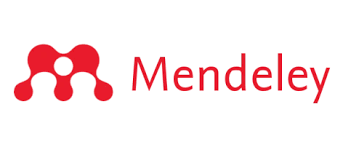Analysis of The Basis of The Creative Economy in The Development Strategy of Economic Innovation
DOI:
https://doi.org/10.59888/ajosh.v1i03.14Keywords:
Innovation, Power, Opportunity, Aspiration, ResultsAbstract
Change occurs quickly and is full of vulnerabilities, such as the current COVID-19 situation, which is very difficult for supply chain managers, even though it currently has a very high level of normalcy. Consumer trends change very quickly and are difficult to predict. With the aim of a creative economy-based innovation development strategy, this study aims to identify the variables that influence the implementation and competitiveness of the innovative industries to be developed. It is important to note that the advertising process is not only about providing information, availability of goods, money and progress, but also has the advantage of providing information, quality map knowledge and applying valuable walking skills. The Strengths, Opportunities, Aspirations, and Outcomes (SOAR) survey and site survey were used to determine the optional process. A strategy that takes into account all the attractive quality points acquired. Therefore, in preparing object forms (translation exercises and communication activities), the potentials and challenges must be carefully weighed to achieve inclusive benefits in each implementation. The results of the SOAR study produced five alternative approaches. The most significant added value is the examination of the importance of possible resource accessibility with a value of 15,862, followed by second to fifth, access to rapid market changes (14,840), the establishment of associations (14,646), standardization and economy. Objects (14,123) and the development of productivity standards for competitiveness (12,288). An imaginative approach to business development should consider resource potential and quick response to advertising requests, along with three other components.
References
Abdurrahman Misno, B. P., Shi, M. E. I., & Ll, B. (2020). Menggenggam Nusantara Raya. Gramedia Pustaka Utama.
Arianto, Bambang. (2020). Dampak pandemi COVID-19 terhadap perekonomian dunia. Jurnal Ekonomi Perjuangan, 2(2), 106–126.
Barreto, Luis, Amaral, Antonio, & Pereira, Teresa. (2017). Industry 4.0 implications in logistics: an overview. Procedia Manufacturing, 13, 1245–1252.
Chawla, Neelam, & Kumar, Basanta. (2022). E-commerce and consumer protection in India: the emerging trend. Journal of Business Ethics, 180(2), 581–604.
Dewi, Azzahra Aulia, Aulia, Darlin, Sumunar, Kurnia Indah, & Hernawati, Erni. (2021). Pengaruh Covid-19 Terhadap Perekonomian Di Negara Asean. JISIP (Jurnal Ilmu Sosial Dan Pendidikan), 5(3).
Elia, Valerio, Gnoni, Maria Grazia, & Tornese, Fabiana. (2017). Measuring circular economy strategies through index methods: A critical analysis. Journal of Cleaner Production, 142, 2741–2751.
Huang, Zhao, & Benyoucef, Morad. (2015). User preferences of social features on social commerce websites: An empirical study. Technological Forecasting and Social Change, 95, 57–72.
Ichsan, Reza Nurul, Panggabean, Nazlah Rachma, Syahbudi, Muhammad, & Nasution, Lukman. (2022). Strategi Pengembangan Inovasi Berbasis Ekonomi Kreatif. Jurnal Darma Agung, 30(3), 865–882.
Kelly, J. Andrew, Kelleher, Luke, Guo, Yulu, Deegan, Ciaran, Larsen, Breanna, Shukla, Shivani, & Collins, Amy. (2022). Assessing preference and potential for working from anywhere: A spatial index for Ireland. Environmental and Sustainability Indicators, 15, 100190.
Koetz, Clara. (2018). Managing the customer experience: a beauty retailer deploys all tactics. Journal of Business Strategy.
Luo, Hao, Wang, Kai, Kong, Xiang T. R., Lu, Shaoping, & Qu, Ting. (2017). Synchronized production and logistics via ubiquitous computing technology. Robotics and Computer-Integrated Manufacturing, 45, 99–115.
Nasution, Dito Aditia Darma, Erlina, Erlina, & Muda, Iskandar. (2020). Dampak Pandemi COVID-19 terhadap Perekonomian Indonesia. Jurnal Benefita, 5(2), 212. https://doi.org/10.22216/jbe.v5i2.5313
Sukmawati, Wilda, Suparno, Ono, & Hermawan, Aji. (2020). Keberlanjutan Rantai Pasok Industri Kecil Dan Menengah (Ikm) Alas Kaki Di Kabupaten Dan Kota Bogor. Jurnal Teknologi Industri Pertanian, 30(1).
Sulasmi, Emilda, Sibuea, Muhammad Buhari, Eriska, Peny, & AirLangga, Eka. (2020). COVID 19 & Kampus Merdeka di Era New Normal. Kumpulan Buku Dosen.
Yu, Wantao, Jacobs, Mark A., Chavez, Roberto, & Yang, Jiehui. (2019). Dynamism, disruption orientation, and resilience in the supply chain and the impacts on financial performance: A dynamic capabilities perspective. International Journal of Production Economics, 218, 352–362.
Downloads
Published
Issue
Section
License
Copyright (c) 2022 Agus Rohmat Hidayat, Nur Alifah

This work is licensed under a Creative Commons Attribution-ShareAlike 4.0 International License.
Authors who publish with this journal agree to the following terms:
- Authors retain copyright and grant the journal right of first publication with the work simultaneously licensed under a Creative Commons Attribution-ShareAlike 4.0 International. that allows others to share the work with an acknowledgement of the work's authorship and initial publication in this journal.
- Authors are able to enter into separate, additional contractual arrangements for the non-exclusive distribution of the journal's published version of the work (e.g., post it to an institutional repository or publish it in a book), with an acknowledgement of its initial publication in this journal.
- Authors are permitted and encouraged to post their work online (e.g., in institutional repositories or on their website) prior to and during the submission process, as it can lead to productive exchanges, as well as earlier and greater citation of published work.










